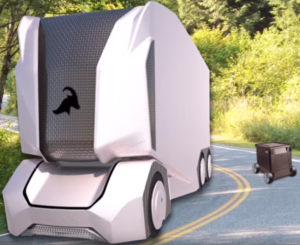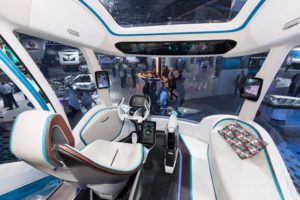There are many possible changes to the trucking industry on the horizon. These changes could either threaten millions of jobs or improve them. Whatever the case, the industry will be completely different by the end of the decade.
THE FUTURE OF TRUCKING
The businesses forging the path for future truck designs appear to have three major goals in mind. The first being fuel efficiency and carbon dioxide output. The second is making trucks fully or semi-autonomous. Last, the safety and comfort of drivers is essential to modern engineers. For some, however, removing the driver all together is their goal.
FUEL EFFICIENCY
Many new strategies are being refined in the near future of trucking fuel economy. While some trucks have reached 12-13 mpg, more improvements are on the way. Some of these changes are simple and familiar like the improved aerodynamics demonstrated in Walmart’s truck. There is also a push for electric and gas hybrid trucks. Elon Musk and Tesla have gone as far as producing a fully electric Semi.

A less familiar solution is drone delivery. The last mile of a trucker’s journey can take a lot of time and gas delivering items to each of their stops. Drones or small driver-less vehicles could eliminate this issue. These machines could deliver items from the truck to their destinations by themselves. Their size can range from a three-foot cube to a full-sized trailer.
Another improvement is Truck linking. This is a smart technology that links trucks back to back through wireless communication. It utilizes the platooning method of trucks traveling close behind each other to reduce drag and increase fuel efficiency. When two trucks are linked through this technology the truck in the rear automatically matches the speed of the front truck. If the truck in the front hits their brakes, the rear truck’s automatic brakes will simultaneously activate. This provides safety and up to 10% fuel savings for the trucks.
AUTONOMOUS TRUCKS
We can expect more semi-autonomous features similar to the truck linking in the near future. The push for many, however, is creating a driver-less truck. Morgan Stanley Research estimates that going completely autonomous could save the freight transportation industry almost 170 billion dollars annually. Some even plan on eliminating the tractor and leaving full-sized trailers driving themselves on the highway.
This raises many concerns. Anyone who has read a sci-fi book or seen Black Mirror knows the potential danger if the autonomous vehicles are hacked or even glitch while driving on busy roads. There is also the sad reality of the loss of 2.5 million truck driving jobs in America alone.
Some argue that truckers will not become obsolete in the age of smart trucks. One business even created a system where drivers can sit in an office in front of a steering wheel and several monitors to remotely drive their trucks! Lastly, some trucks may drive themselves, but they cannot fuel themselves or perform the consistent maintenance necessary for these large vehicles. Drivers could still be an important role in autonomous vehicles and a sort of symbiotic relationship between driver and truck can be expected in the future
SAFETY AND COMFORT
In the end, this autonomous future may not be a threat to truck drivers. It may, in fact, serve to improve the safety of their travels. The same technology that keeps autonomous trucks aware of surrounding danger and cars can help truckers avoid human mistakes. This technology could save lives.

Despite all this focus on safety while saving money and fuel, some companies are going all out in creating a comfortable home in their trucks. The 2018 Volvo VNL is a great example of comfort and innovation. With plenty of space and quality of life features, almost anyone would consider a trucking life after seeing it. Models like the Iveco Z truck LNG will even include a shower and cooking space.
CONCLUSTION
Many jobs are consistently adapting to modern technology and changes. The trucking industry has stayed mostly the same for many decades. The next decade or so will change that due to smart, autonomous technology and truck drivers must adapt. Despite the push to reduce the need of drivers, this technology will most likely serve to improve the driver’s experience rather than replace them. Watch this video to listen to real truck driver’s opinion on this topic.